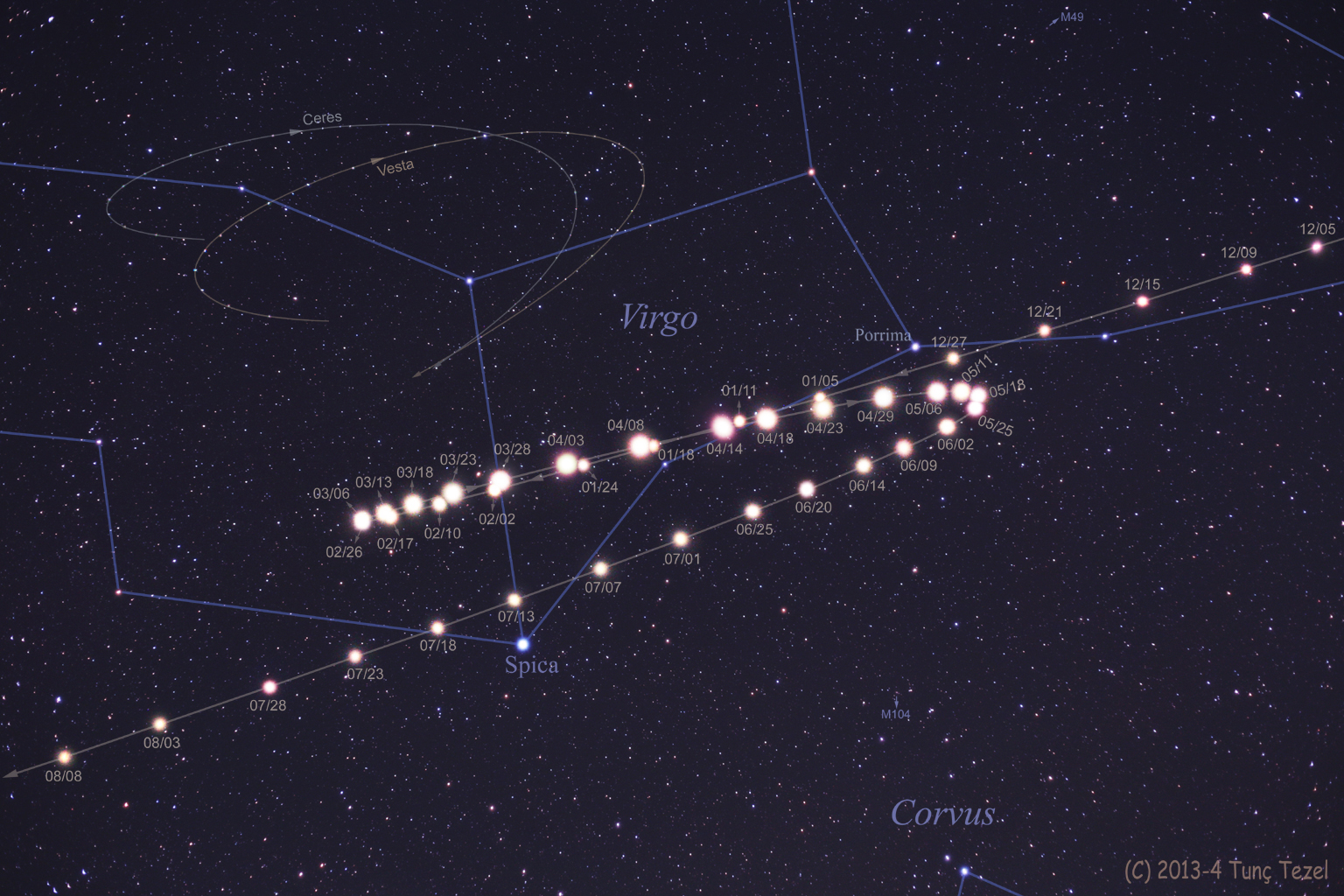Planetary Motions
PLANETARY MOTIONS
There are five (excluding the Earth) naked eye planets, Mercury,
Venus, Earth, Mars, Jupiter,
and Saturn
(
sky view from Eugene
).
Uranus is actually just bright enough to be seen with the unaided eye at
a dark sight if you know where to look and someone points it out.
The planets' motions share some common features:
- The planets move roughly in the ecliptic plane. This
implies that the orbits of the planets are nearly co-planar with the
orbit of the Earth about the Sun.
- Today, we know that the planets orbit the
Sun in the same sense as does the Earth, the west-to-east direction
counterclockwise as viewed from the NCP.
We also observe a strange behavior in that the
apparent motion of planets can appear more erratic. Planets usually move
in the west-to-east direction through the stars on the Celestial Sphere,
however, periodically, this motion reverses itself and the planets
move east-to-west through the stars, undergoing what is called
retrograde motion. This erratic motion was something all models for
the Solar System had to explain.
The planets' orbits are all roughly circular in shape.
The preceding green-highlighted facts are interesting and
important because they suggest that our Solar System
formed as a single unit
rather than as individual planets which,
later, were assembled into the Solar
System.
What are the interesting
properties of the apparent (observed) motions of the
planets?
Retrograde motion
The planets generally move west-to-east through the stars
(prograde motion)
but, peridiocally, the motion changes and they move
east-to-west through the stars (retrograde motion).
Below is the
2014 retrograde of Mars:

The retrograde
motion continues for a few months and then the
motion switches back to prograde. This seemingly inexplicable
behavior is easily understood within the context of a Sun-centered
(helio-centric) Solar System. This motion is harder to understand in the
context of an
Earth-centered (geo-centric) model. We return to this issue later.
Morning and Evening Stars
Venus and Mercury are observed only in the early morning or early
evening;
Venus and Mercury can not be seen at midnight
in Eugene.
The explanation for
this phenomenon is simple in the Sun-centered (helio-centric) model:

Because the orbits of Mercury and Venus lie inside the orbit of the
Earth, we see that both planets have to stay rather
close to the position of the Sun as they move through the sky.
Venus
must be within ~46 degrees of the Sun at all times while Mercury
(because of its smaller orbit) must remain within 28
degrees of the Sun (Note -- due to the non-circular shape of Mercury's
orbit, this limit can be as small as 18 degrees).
This close proximity to the Sun means that we should be able to see Mercury and
Venus only in the early evening (after the Sun has just set) or in the
early morning (just before the Sun rises):
 Morning and Evening stars can be explained in a tweaked geo-centric model.
They, however, are naturally explained in a helio-centric model as
shown above.
Morning and Evening stars can be explained in a tweaked geo-centric model.
They, however, are naturally explained in a helio-centric model as
shown above.
Phases of Venus
Venus and Mercury both go through the full set of
phases like the Moon; Mars does not. Why?
Galileo discovered that Venus goes through phases in the 1600s.
The observation of the phases of Venus requires a telescope. The geo-centric
model when modified to explain morning and evening stars cannot simultaneously
account for the phases of Venus. Consequently, we concentrate on looking at
how the geo-centric model explains retrograde motion.






